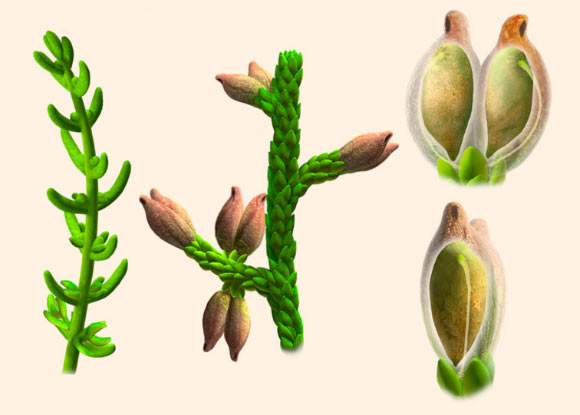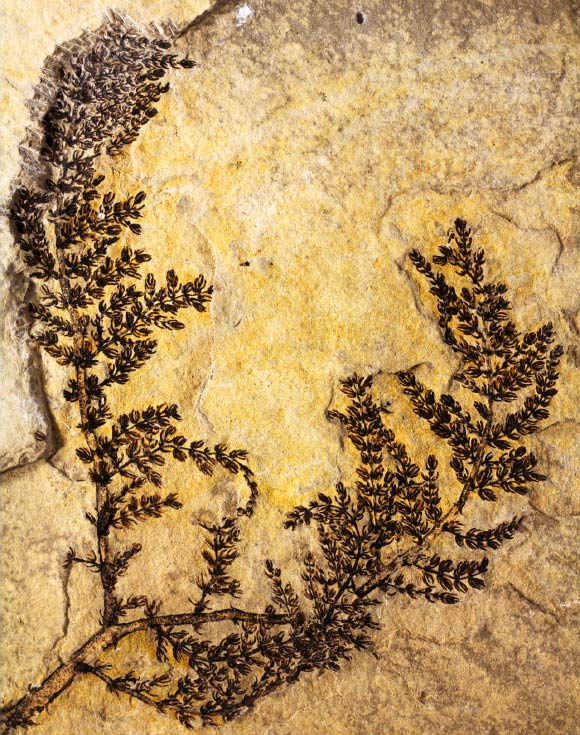A team of paleontologists from the United States, France, Germany and Spain has identified a Lower Cretaceous freshwater plant named Montsechia vidalii as one of the first flowering plants.
Montsechia vidalii grew 125 to 130 million years ago in the freshwater lakes in what are now mountainous regions of Spain, and was a contemporary of dinosaurs such as the brachiosaurus and iguanodon.
The age of the plant is based upon comparisons to other fossils in the same area, notably the freshwater algae charophytes.
Fossils of Montsechia vidalii were first discovered more than a century ago in the limestone deposits of the Iberian Range in central Spain.
Also previously proposed as one of the earliest flowering plants is Archaefructus sinensis, an aquatic plant found in China.
“Based on our new analysis, we know now that Montsechia vidalii is contemporaneous, if not more ancient, than Archaefructus sinensis,” said Prof David Dilcher of Indiana University, senior author on the study published online in the Proceedings of the National Academy of Sciences.
“The fossils used in the study were poorly understood and even misinterpreted during previous analyses.”
Prof Donald Les from the University of Connecticut, who was not involved in the study, added: “the reinterpretation of these fossils provides a fascinating new perspective on a major mystery in plant biology.”
The conclusions are based upon careful analyses of more than 1,000 fossilized remains of Montsechia vidalii.
“The precise, painstaking analysis of fossilized structures remains crucial to paleobotany, in contrast to other biological fields, due to the current inability to know the molecular characters of ancient plants from millions of years ago,” Prof Dilcher said.

Illustrations based on fossilized remains show long- and short-leaved forms of Montsechia vidalii and a single seed. Image credit: Oscar Sanisidro.
This careful examination was important to Montsechia vidalii since most modern observers might not even recognize the fossil as a flowering plant.
“Montsechia vidalii possesses no obvious ‘flower parts,’ such as petals or nectar-producing structures for attracting insects, and lives out its entire life cycle under water,” Prof Dilcher explained.
“The fruit contains a single seed – the defining characteristic of an angiosperm – which is borne upside down.”
“In terms of appearance, Montsechia vidalii resembles its most modern descendent, identified in the study as Ceratophyllum,” Prof Dilcher said.
“Also known as coontails or hornworts, Ceratophyllum is a dark green aquatic plant whose coarse, tufty leaves make it a popular decoration in modern aquariums and ponds.”
The team plans to learn more about the species connecting Montsechia vidalii and Ceratophyllum, as well as delve deeper into when precisely other species of angiosperms branched off from their ancient forefathers.
_____
Bernard Gomez et al. Montsechia, an ancient aquatic angiosperm. PNAS, published online August 17, 2015; doi: 10.1073/pnas.1509241112








